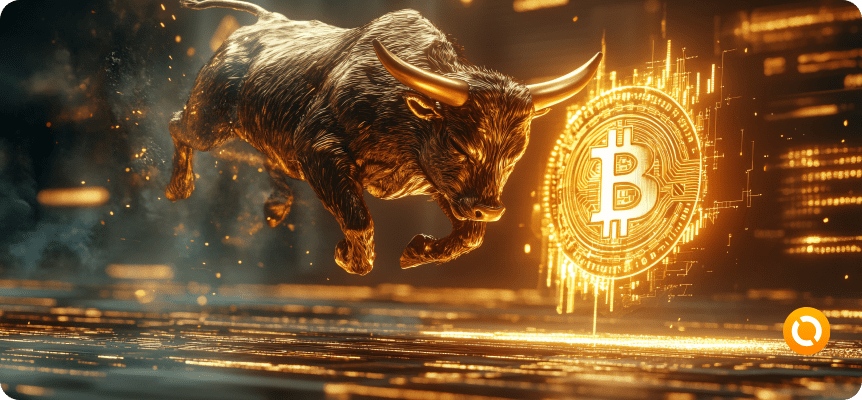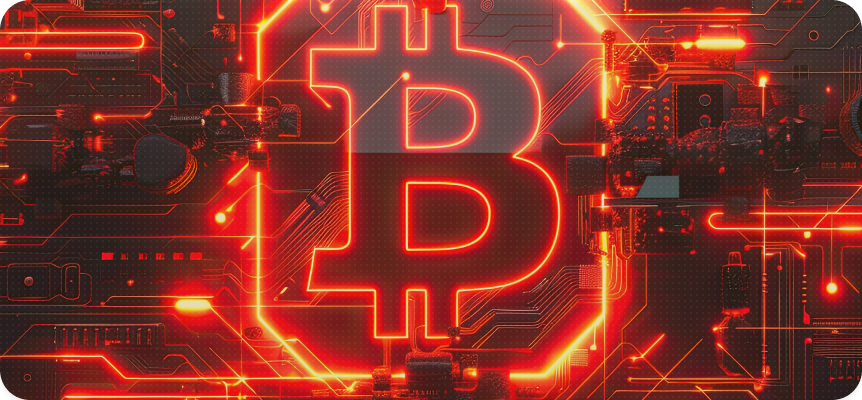Blockchain technology underlies a variety of digital services, including cryptocurrencies, which are used for both investments and financial transactions, and are also becoming part of metaverses — digital spaces where users can create avatars, exchange items, make purchases and interact. The basis of all these processes is blockchain technology, an innovative system that allows for decentralized, transparent and secure data accounting.

What is blockchain and how does it work?
A blockchain is a digital database that represents a sequential chain of blocks, each of which contains information about transactions. This “chain of blocks” is encrypted using a unique code (hash) that makes the data immutable and secure. Changing any character in one block automatically entails a change in the entire chain, which makes data forgery almost impossible. The transparency of the technology allows each participant of the network to see information about transactions without being able to change it, which strengthens trust.
In simple words, a blockchain is a database where all information is stored in the form of consecutive blocks connected to each other. Blockchain allows you to record data securely and transparently, without the possibility of changing or deleting records, which makes it one of the most secure technologies for managing and exchanging information.
Blockchain was first mentioned by someone under the pseudonym Satoshi Nakamoto in a technical document published on October 31, 2008, which described the first cryptocurrency — bitcoin. However, the foundations of the idea of decentralized accounting were laid back in the 1960s and 1970s, and Stuart Haber and W. came closest to creating a blockchain. Scott Stornetta in 1991, who developed a system of sequential blocks with a hash. At that time, the technology for practical implementation did not yet exist, and the idea was patented, but it was implemented only with the advent of the bitcoin blockchain in 2008.
The principle of operation of the blockchain

The blockchain system is a distributed database accessible to all network participants. For example, transactions in cryptocurrencies are recorded in the blockchain, making each of them transparent and verifiable, but at the same time beyond the control of governments and financial institutions. Such a system ensures the independence of digital assets and their resilience to change, creating a reliable environment for financial transactions and data storage.
The process of adding blocks to the blockchain is carried out through mining, a process in which the miner receives a reward for each new block. When making a transaction, it must be confirmed by several network participants, which ensures the decentralization of the blockchain. Thus, the system works around the clock and does not depend on central banks.
The evolution of mining and the development of algorithms

Initially, bitcoin mining could be carried out on a home computer, but over time the computational complexity has increased, and now powerful computing resources are required for effective mining, which are provided by specialized farms with a large number of video cards. This has led to a shortage of GPUs and an increase in their prices.
The first algorithm used in the bitcoin blockchain was called Proof-of-Work. It requires significant computing power and consumes a lot of electricity. A modern alternative is the Proof-of-Stake algorithm, where network integrity is maintained by validators, not devices. To participate in the PoS algorithm, you need to invest coins in the form of a “bet” and confirm transactions, which brings rewards to validators. Bitcoin remains on the Proof-of-Work algorithm, while the Ethereum network has switched to Proof-of-Stake, demonstrating the transition to more environmentally friendly and efficient solutions.
Types of blockchains: public and private networks
There are two main types of blockchains: public, open to everyone, and private, accessible only to a limited number of participants. The first type is the bitcoin blockchain, the first public registry of its kind, followed by Ethereum, created by Vitalik Buterin in 2015. Public blockchains allow everyone to participate in the network, providing decentralization and transparency.
The corporate sector has also begun to actively implement blockchain. For example, the R3 consortium, with the participation of the Nasdaq exchange and Accenture, created the Corda blockchain, focused on the financial sector. IBM has developed Hyperledger, which is successfully used to protect data in healthcare and ticket sales, preventing their forgery. Hyperledger has become one of the leading solutions for large companies thanks to the support of IBM, which offers a reliable and proven product. Private blockchains are faster and cheaper to use, but they may be more vulnerable to manipulation within the system, as access to them is limited.
The main applications of the blockchain

Blockchain is in demand where it is necessary to ensure high speed and reliability of data transmission, which makes it useful in a variety of industries. It is used for:
Cryptocurrencies: The blockchain is at the heart of cryptocurrencies such as bitcoin and Ethereum. Cryptocurrencies attract both a method of investment and a tool for international money transfers. Some shops and cafes already accept bitcoin, offering the opportunity to purchase goods and services.
Digital currencies: Several countries are launching pilot projects to introduce digital currencies. For example, China has successfully implemented the digital yuan, which can already be used to pay in retail stores.
Smart contracts: They can be used to track the path of any product from the manufacturer to the end user, verifying its authenticity and compliance with standards. This is especially important for products such as coffee or wine, where the customer wants to know the history of the product.
NFT and blockchain in the gaming industry

NFT, or non-interchangeable tokens, have become a popular means of verifying rights to digital assets such as images, music, and GIFs. NFT can be purchased on OpenSea and Rarible marketplaces. It is expected that by 2025, the NFC market volume will reach 20% of the total capitalization of the crypto industry.
The blockchain-based game has gained popularity due to the play-to-learn (play to earn) mechanics, in which players can earn income for achievements in the game. For example, Taxi Infinity allows users to earn money by training virtual monsters. Enjin and Atarius Network companies help developers integrate blockchain and NFT elements into games by offering financial support and technical consulting.
Advantages and opportunities of the blockchain

Blockchain technology solves a lot of problems in a variety of areas:
Data protection: Each block contains information about the previous block, which makes hacking the entire chain almost impossible.
Transparency: all actions are recorded and stored in the blockchain, so any participant can find and verify the necessary data.
Error tolerance: thanks to a distributed data management system, the probability of errors is reduced and the possibility of unauthorized changes is eliminated.
Property management: blockchain allows you to record transactions with digital and physical assets, as well as confirm ownership of them.
Limitations and disadvantages of the blockchain

Despite its many advantages, blockchain faces challenges and limitations. The implementation of the blockchain remains a difficult task for the mass user. At the moment, storing and trading cryptocurrencies requires special knowledge, and even the loss of a password to a crypto wallet can lead to a complete loss of access to funds.
The regulation of cryptocurrencies causes a lot of discussion. For example, China completely banned cryptocurrency transactions in 2021. However, government agencies in many countries are seeking to implement KYC (know your customer) and AML (anti-money laundering) processes to combat anonymous transactions and fraud.
- High energy costs: the operation of the blockchain, especially when using the Proof-of-Work algorithm, requires a lot of resources.
- Privacy concerns: Although the information in the blockchain is protected, it is still available to all network participants, which may raise privacy issues.
- Lack of control: The lack of unified control over the system makes regulation difficult and can lead to legal difficulties.
- The need for consent: Most actions require the consent of all participants, which can slow down the process.
In general, blockchain is a technology that transforms traditional data management systems and provides new opportunities for business and society. However, for its successful application, it is important to take into account both advantages and disadvantages in order to choose the appropriate areas and properly organize the interaction between the participants. Thus, the main challenge for the blockchain is to find a balance between decentralization and the need to comply with regulatory requirements.
Where is the blockchain used?

Using the example of different areas, the blockchain has become a key element for solving the following tasks:
Banking: Blockchain can control payment processing and transaction accounting, reducing fraud risks and commission costs.
Electronic data management: Many organizations use blockchain to protect confidential information and improve control over employee actions.
Real estate: blockchain records real estate transactions, allowing you to quickly check the history of ownership and reduce the number of errors in documents.
Application development: Blockchain has become the basis for the creation of decentralized applications, which makes data management more secure and open.
Blockchain Prospects: from Threats to Growth and Integration

Although blockchain is still facing technological challenges, increased regulation in individual countries and threats from scammers, its integration into the real economy is becoming inevitable. Already today, commercial banks are realizing that they may gradually lose their traditional role as an intermediary. With the advent of new digital financial instruments, the state will in the future be able to directly pay pensions, allowances and other social benefits to citizens, bypassing banks, while offering more favorable conditions than traditional financial institutions.
Blockchain in the gaming industry and web3
The gaming industry is actively adapting the blockchain through Gamefy (play and earn), which unites about 1-2 billion users worldwide who have played a blockchain-based game at least once. Forecasts show that by 2025-2027, the number of players may grow to 3 billion, and the share of active users among them will increase significantly. In the wake of interest in NFT and metaverses, the world’s largest brands such as Audi, Adidas and Ralph Lauren are actively entering the blockchain industry, which stimulates the development of the web3 concept – a new, decentralized stage of the Internet based on blockchain and data decentralization.
Development of Decentralized Finance (DeFi)
The decentralized finance (DeFi) market is growing rapidly and is already a serious competitor to traditional banks. With DeFi, users can invest in digital assets such as security tokens (analogs of securities) and NFT, which represent digital art. The DeFi market has already accumulated over one hundred billion US dollars, and as it grows, the need for qualified personnel will only increase. Many companies need specialists with knowledge of blockchain technologies and programming languages such as C++ to create and maintain decentralized networks.
Thus, the prospects of blockchain go far beyond the financial sector, and its potential covers almost all industries, from government payments and the gaming industry to artificial intelligence and digital art.
Conclusion

Blockchain is not just a technology, but a foundation on which new financial and social systems focused on security, transparency and equality are already being built. What started as an innovation for cryptocurrencies has quickly turned into a platform for creating digital contracts, secure transactions, and even new forms of digital art and media. Decentralized networks and smart contracts in the blockchain are changing approaches to data storage and transmission, creating a new Internet layer that protects the rights of users and stimulates the development of the digital economy.
Today, blockchain has already moved beyond experimentation, becoming a mainstay in areas such as finance, logistics, healthcare and entertainment. Perhaps blockchain will become the tool that will strengthen trust in the digital age and open up new horizons for business and society. In the era of global digitalization, blockchain is becoming a key element in creating a reliable, transparent and sustainable ecosystem for each of us.
FAQ

What is blockchain?
Blockchain is a modern data storage technology that changes approaches to accounting and processing information in various fields. The main idea of the blockchain is to create a chain of blocks containing unique records. Each block includes a set of information and is linked to the previous block, creating a continuous “log” of data. This means that information recorded once in the blockchain can practically not be changed, which makes it a reliable means of storing data confirming, for example, the fact of ownership of assets or the conclusion of contracts.
What are the basic principles of the blockchain?
Decentralization: Data is not stored on one specific server, but is distributed among thousands of computers. This eliminates the risk of data loss, even if some of the network nodes fail.
Transparency and control: all user actions (whether cryptocurrency transactions or contract registration) are recorded and approved by the system. This makes blockchain an ideal solution for cases where transparency is important, for example, for maintaining an investment journal or accounting for property.
Security: The blockchain uses cryptographic procedures to protect data and identify owners. The information in the blocks is protected from forgery and access without permissions.
What types of blockchain are there?
Public blockchains: they are completely open and allow anyone to join the network. Examples of such blockchains are Bitcoin and Ethereum, where everyone can verify data and conduct their own transactions.
Private blockchains: they are used for internal accounting of organizations. A limited number of people have access to such a network, which helps to avoid data leakage and maintain confidentiality.
Where is blockchain used most often?
Cryptocurrencies and investments: blockchain allows you to easily and quickly exchange digital assets, tracking every step of the transaction. Thanks to this, investors receive transparent data on the status of their assets, which contributes to the growth of trust.
Smart contracts: They are programs that automatically fulfill the terms of an agreement if certain rules are followed. This reduces the need for intermediaries and reduces transaction costs.
Identification systems: blockchain allows you to create a decentralized identification system where users can manage their data and transfer it to third parties only if necessary.
What are the significant disadvantages of the blockchain?
Slowness: Data processing in public networks may take longer than in centralized systems.
High energy consumption: the operation of the blockchain requires a large amount of resources, which leads to significant energy costs.
Regulation and standardization: Due to the decentralized structure of blockchains, their implementation in commercial and government systems requires the development of clear rules and standards.
What does the blockchain expect in the future?
Blockchain technology is constantly changing and finding new applications in a wide variety of industries. It is expected that in the future it will play a key role in areas such as finance, healthcare, data management and identification. With the expansion of the blockchain network and the development of software to support it, it can become an important element of the global infrastructure on which many digital solutions and services will be built.











